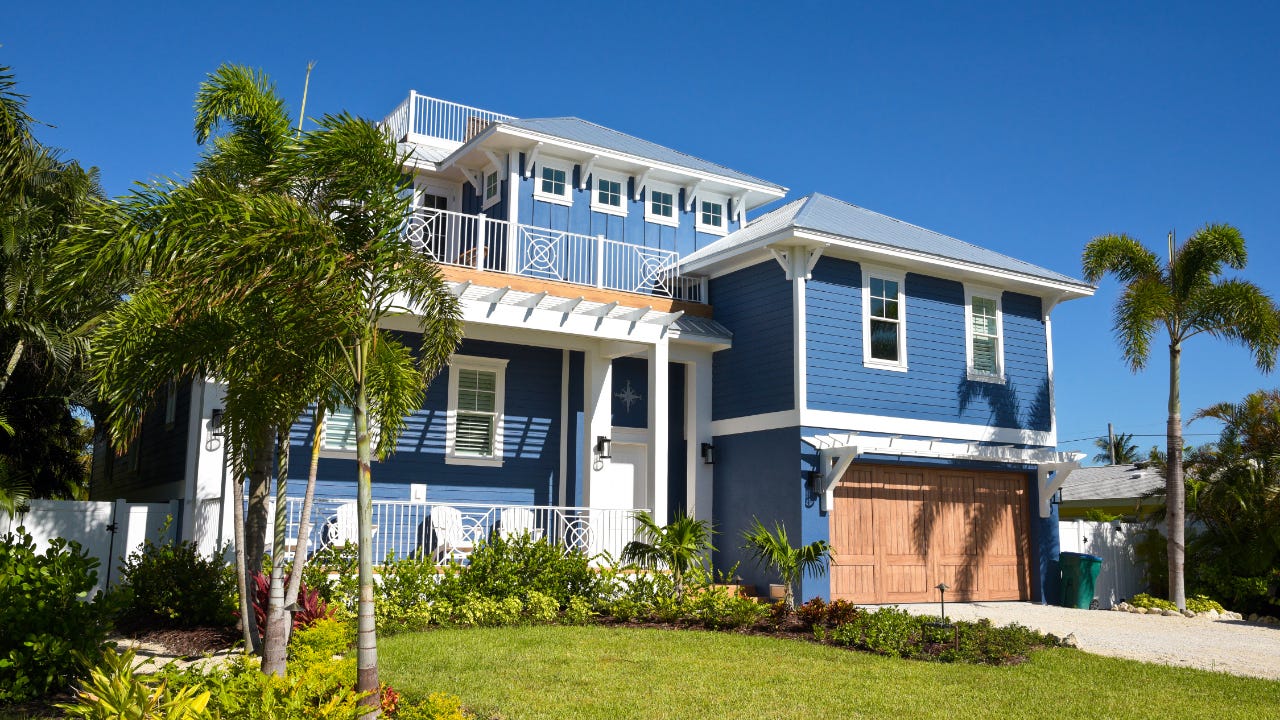5 tips for financing investment property

After a big increase in housing prices over the past few years, it appears that the market has cooled. With mortgage rates soaring recently, it’s more difficult for investors and would-be homeowners to finance their investment property.
While selecting a great investment property is difficult enough on its own, once you’ve found that perfect house or apartment, how do you go about financing it? A little creativity and preparation can bring financing within reach for many real estate investors.
If you’re ready to borrow for a residential investment property, these five tips for financing can help improve your chances of success.
1. Make a sizable down payment
Since mortgage insurance won’t cover investment properties, you’ll generally need to put at least 20 percent down to secure traditional financing from a lender. If you can put down 25 percent, you may qualify for an even better interest rate, according to mortgage broker Todd Huettner, president of Huettner Capital in Denver.
A larger down payment gives you “more skin in the game” and therefore more to lose if the investment doesn’t work out. That can be a powerful incentive, and a larger down payment also provides the bank greater security against losing its investment. If the investment goes poorly, you’ll lose your whole stake before the bank begins to lose any money in the property.
2. Be a “strong borrower”
Although many factors — among them the loan-to-value ratio and the policies of the lender you’re dealing with — can influence the terms of a loan on an investment property, you’ll want to check your credit score before attempting a deal.
“Below [a score of] 740, it can start to cost you additional money for the same interest rate,” Huettner says. “Below 740, you will have to pay a fee to have the interest rate stay the same. That can range from one-quarter of a point to two points to keep the same rate.”
A point is equal to 1 percent of the mortgage loan. So, a point on a $100,000 loan would equal $1,000. (Here’s when it’s worthwhile to buy points.)
The alternative to paying points if your score is below 740 is to accept a higher interest rate.
In addition, having reserves in the bank to pay all your expenses — personal and investment-related — for at least six months has become part of the lending equation.
“If you have multiple rental properties, [lenders] now want reserves for each property,” Huettner says. “That way, if you have vacancies, you’re not dead.”
3. Turn to a local bank or broker
If your down payment isn’t quite as big as it should be or if you have other extenuating circumstances, consider going to a neighborhood bank for financing rather than a large national financial institution.
“They’re going to have a little more flexibility,” Huettner says. They also may know the local market better and have more interest in investing locally.
Mortgage brokers are another good option because they have access to a wide range of loan products — but do some research before settling on one.
“What is their background?” Huettner asks. “Do they have a college degree? Do they belong to any professional organizations? You have to do a little bit of due diligence.”
4. Ask for owner financing
In the days when almost anyone could qualify for a bank loan, a request for owner financing used to make sellers suspicious of potential buyers. But now it’s more acceptable because credit has tightened and standards for borrowers have increased.
However, you should have a game plan if you decide to go this route.
“You have to say, ‘I would like to do owner financing with this amount of money and these terms,’” Huettner says. “You have to sell the seller on owner financing, and on you.”
This game plan shows the seller that you’re serious about the transaction and that you’re ready to make a real deal based on the practical assumptions that you’ve presented.
5. Tap your home equity
If you have a significant amount of equity in your primary residence or other investment property, you can use it as a form of financing. If you want to tap your home equity, there are a few ways to go about it.
Home equity loan
One option for leveraging your home equity is a home equity loan. The advantage of these loans is they are secured by the equity in your home. This allows the interest rates to be relatively low, with repayment terms up to 30 years. For those with good credit, interest rates can be even lower.
Pros
- Fixed interest rate makes payments predictable
- Typically lower interest rates than credit cards or personal loans
- Long repayment period allows for low monthly payments
- May allow you to borrow more than unsecured loans
Cons
- May put your home at risk if you can’t make payments
- Potential fees and closing costs
- Generally requires at least 20 percent equity
HELOC
A home equity line of credit (HELOC) is another way to tap the equity in a home. These loans are also secured by your home equity, but in this case, you draw the funds as needed instead of as a lump sum. HELOCs can have interest rates lower than home equity loans, but the interest rates on most are variable. Thus, you could find yourself paying a higher interest rate on your HELOC in the future.
Pros
- Often interest-only payments during the draw period, which can be more manageable
- Typically lower interest rates than credit cards or personal loans
- Lets you tap into your home equity on an as-needed basis
- Variable interest rates, which can be useful when rates are high
Cons
- May put your home at risk if you can’t make payments
- There may be fees and closing costs
- Variable rates mean payment amounts can be tougher to predict
Cash-out refinance
A cash-out refinance cashes out your existing mortgage and replaces it with a new, larger one. It then gives you access to the difference between the old mortgage and the new one in the form of cash. You can then use that cash to finance your investment properties. With a refinance, you may be able to secure a lower interest rate or shorter repayment term than what you currently have.
Pros
- May allow you to borrow more than unsecured loans
- Doesn’t require a second mortgage
- Typically lower interest rates than credit cards or personal loans
Cons
- May put your home at risk if you can’t make payments
- There may be fees and closing costs
- Reduces your home equity
Other creative financing options
If all else fails, sometimes you have to get creative. Fortunately, there are several other available options to finance your investment property.
Peer-to-peer lending
Peer-to-peer lending has become popular in recent years with several lending platforms popping up online. This is a way for investors to connect with borrowers who need financing for various purposes, and investors like them as a form of alternative investment. Fees and interest rates are generally low, depending on creditworthiness.
Pros
- Could offer better interest rates than banks for borrowers with good credit
- Potentially easier to secure funding for borrowers with poor credit
- May allow you to borrow smaller amounts than other loan types
Cons
- Could be higher fees than other loan types
- Fewer borrower protections than you get with traditional loans
- Potentially higher rates than other lenders if your credit is poor
Fix-and-flip loans
Fix-and-flip loans, as their name implies, are generally short-term loans intended for house flippers. These are “hard-money” loans with interest rates typically in the range of 12 to 18 percent, plus two to five points. If you come across a property you would like to fix up and sell in the next 12 to 18 months, a fix-and-flip loan might be worth a look.
Pros
- Typically offers flexible loan terms compared to traditional financing
- Often funded within a few business days
- May offer easier qualification than traditional financing
Cons
- May put your home at risk if you can’t make payments
- There may be fees in addition to interest
- Typically shorter repayment periods than other financing methods
Life insurance policies
Life insurance may be considered a liquid asset (depending on the type), which is preferable for lenders. In particular, a permanent life insurance policy gives you easy access to cash. You can borrow against that money when purchasing a new home. This makes you more attractive to lenders and could make it easier to secure financing.
Pros
- Some policies allow borrowing against a cash value at low rates
- Doesn’t require a credit check
- No set repayment schedule, allowing you to pay at your own pace
Cons
- Unpaid and interest and principal can reduce policy’s death benefit
- Borrowing against the policy reduces its cash value
- Newer policies may not have a big enough cash value to finance your real estate investments
Credit cards and personal loans
Credit cards and personal loans can be an easy way to finance part of your home purchase. Some credit cards have zero percent introductory offers and personal loans may let you borrow up to about $100,000.
While both are a convenient form of financing, personal loans often have high interest rates, as do credit cards after any introductory offers. Thus, these shouldn’t be your first options, but they can provide some additional financing in a pinch.
Pros
- Can provide immediate access to funds
- Typically don’t require collateral
- Borrow up to $100,000 with a personal loan
- Some credit cards have 0% introductory APR
Cons
- Personal loans and credit cards have high interest rates
- Low borrowing limits, especially for credit cards
- Maxing out a credit card will likely hurt your credit score
Margin loans
Margin loans are a line of credit that can be used to finance a property and are backed by a borrower’s investments. They’re typically used as a short-term funding tool and come with a number of risks such as a margin call and amplified losses if your investment portfolio declines in value.
Pros
- Can provide fast funding without needing to sell investments
- Typically lower interest rates than credit cards and personal loans
- No prepayment penalties
Cons
- They have variable interest rates, which can increase over time
- Typically limits you to borrowing up to 50% of your portfolio’s value
- Potential for overleverage
Crowdfunding
Crowdfunding is exactly what it sounds like — it allows a group of investors to chip in and finance a real estate investment together. This means you wouldn’t have to come up with the entire investment amount but would instead contribute alongside other investors.
Crowdfunding can be great for newer real estate investors lacking capital. It may sometimes have minimal credit requirements, and you share your risk with other investors.
However, this generally means you must concede some control and decision-making to others. There can also be investment management or advisory fees. While this can be a good choice for new investors, you must carefully study each crowdfunding platform to know what to expect.
Pros
- Allows you to request funding from multiple people
- May have minimal credit history requirements
- Lets you share risk with others
- Scalable across multiple properties
Cons
- May require you to share ownership and control with other investors
- There can be fees and costs involved
- Competition can be fierce
Partnership
A real estate partnership is a team of like-minded individuals who jointly invest in one or more investment properties. While partnerships can be structured in various ways, they generally have two or more partners contributing funds to purchase investment properties. This reduces not only each partner’s capital needs but also the amount of risk they assume.
However, this arrangement also means you must share decision-making and responsibilities with at least one other investor. If the other partner(s) make poor decisions, you could be partly responsible for the repercussions. This highlights the importance of finding partners who are a good fit.
Pros
- Reduces the capital needs of each partner
- Easier to come up with a larger amount of shared capital
- Helps reduce the risk for each partner
Cons
- Requires you to share decision-making and control with others
- Unequal financial contributions can lead to resentment
- In some cases, you could be responsible for the debts or actions of other partners
Use real estate to create retirement income
Real estate is a popular way for individuals to generate retirement income. In fact, it’s Americans’ favorite long-term investment, according to a 2022 Bankrate study.
That popularity partially relies on real estate producing a steady stream of income, as investors collect a regular monthly rent from their tenants. For retirees, a steady income is exactly the kind of security that they’re looking for when not fully employed.
And retirees have upside on that income. Over time, a well-managed property can increase its rents, putting more money into investors’ pockets each month. The property can also increase in value, so when it comes time to sell or even invest in another property, there’s equity that can be tapped. Of course, investment property has other advantages, especially around taxes.
If you don’t want to get into managing property directly, you can buy it via real estate investment trusts (REITs) in the stock market and let a professional manager deal with all the problems. REITs are tremendously popular with retirees because of their steady dividends.
Bottom line
Real estate is usually a long-term game where the gains tend to come over time. But however you invest in real estate, you can make money if you follow smart principles of investing.
When financing property, make sure you can afford the payments when you take out the loan. Then as you pay down the loan over time, consider how you might be able to reduce the interest expenses even further based on your solid borrowing history and lower outstanding loan balance.
FAQs
— Bob Haegele contributed to an update of this article.







